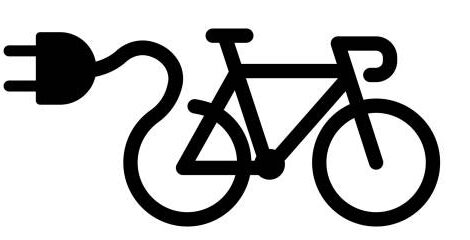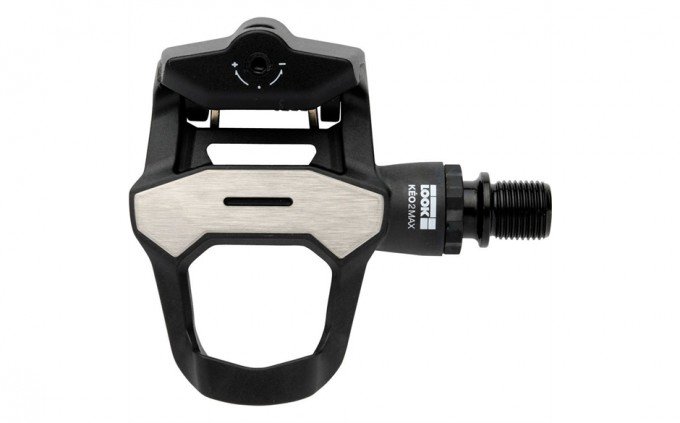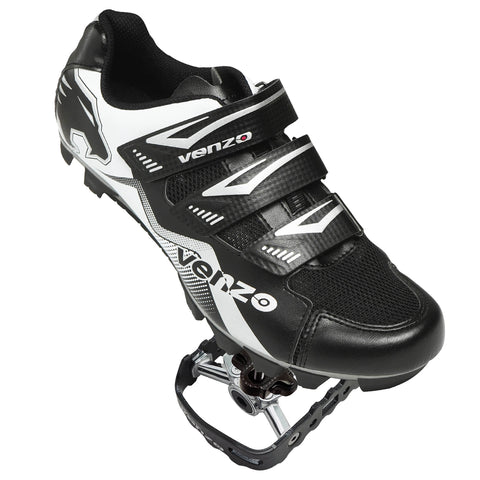Unlocking Performance: Why Clipless Pedals and Cycling Shoes Matter
The transition to clipless pedals and cycling shoes marks a significant upgrade for any cyclist. Traditional flat pedals often result in wasted energy as the foot can slip or lose contact during the pedal stroke. In contrast, cycling shoes and pedals create a secure connection, allowing for a more efficient transfer of power from the legs to the bicycle. This enhanced connection translates to increased speed, improved endurance, and greater control over the bike, especially during challenging maneuvers or varied terrain. The integration of cycling shoes and pedals minimizes energy loss, enabling riders to exert force throughout the entire pedal rotation, not just the downstroke.
The benefits of using cycling shoes and pedals extend beyond mere power transfer. The secure connection fosters a more stable and controlled riding experience. Riders can confidently navigate corners, climb steep hills, and sprint with greater efficiency. This is because the foot remains firmly planted on the pedal, preventing slippage and allowing for quick reactions to changing road conditions. The rigid soles of cycling shoes further enhance power transfer, preventing energy loss due to flexing. Furthermore, the design of cycling shoes and pedals encourages proper foot alignment, which can reduce the risk of injuries and improve overall comfort during long rides.
This article serves as a comprehensive guide to understanding the world of cycling shoes and pedals. From selecting the right type of shoe for your riding style to ensuring compatibility with your chosen pedal system, we will cover all the essential aspects. We’ll delve into the different cleat engagement mechanisms, explore advanced features, and provide practical tips on maintenance and care. Whether you’re a seasoned cyclist looking to optimize your performance or a beginner eager to experience the advantages of clipless systems, this article will equip you with the knowledge to make informed decisions and elevate your riding experience. So, understanding the importance of cycling shoes and pedals is the first step toward unlocking your full potential on the bike.
Finding Your Perfect Fit: Understanding Different Types of Cycling Shoes
Selecting the right cycling footwear is crucial for performance and comfort. A wide array of cycling shoes and pedals cater to diverse riding styles. Road cycling shoes prioritize stiffness and aerodynamics. They often feature lightweight construction and three-bolt cleat compatibility. Brands like Shimano with the RC7 model and Specialized with the S-Works Recon offer excellent options. Mountain bike shoes, on the other hand, emphasize durability and grip. They typically have recessed cleats for walking and more robust soles. Two-bolt SPD systems are common. Triathlon shoes are designed for quick transitions with features like wide openings and single-strap closures. Gravel and touring shoes strike a balance between road and mountain bike features. They provide comfort for long rides and the ability to walk when needed. Considering these factors ensures you find cycling shoes and pedals tailored to your specific needs.
Road cycling shoes often boast incredibly stiff soles made from carbon fiber. This maximizes power transfer from your foot to the pedal. Closure systems vary, with options like Boa dials, Velcro straps, and traditional laces. Boa systems offer precise adjustability. Mountain cycling shoes prioritize durability and protection. Reinforced toe boxes and rugged outsoles are common. The soles are less stiff than road shoes to allow for some flexibility when walking. The type of cycling shoes and pedals you choose significantly impacts your riding experience. Consider the terrain, distance, and intensity of your rides. Triathlon cycling shoes are made for speed. They offer easy entry and exit during transitions. The design promotes efficient cycling even when wet. Gravel cycling footwear needs to be versatile. They must be comfortable for long days in the saddle. Also, they need to be functional for off-bike excursions.
The construction of cycling shoes and pedals directly affects performance. Stiff soles enhance power transfer. Comfortable uppers prevent hot spots and blisters. Secure closure systems maintain a snug fit. Sole materials range from nylon to carbon fiber. Carbon fiber is lighter and stiffer, but also more expensive. Closure systems like Boa dials allow for micro-adjustments. This ensures a precise and comfortable fit. Velcro straps offer a more budget-friendly option. Consider the type of cleat system your shoes use. Three-bolt systems are common for road cycling shoes and pedals. Two-bolt systems are standard for mountain biking. Understanding these differences is vital for selecting the right cycling shoes and pedals. The choice significantly influences your comfort, efficiency, and overall enjoyment of cycling. High-quality cycling shoes and pedals are an investment in your riding experience. They provide better performance and comfort on every ride.
How to Choose the Right Cycling Shoes for Your Needs
Selecting the right cycling shoes is crucial for comfort, performance, and injury prevention. Your riding style is the primary factor. Road cyclists often prefer stiff-soled shoes for optimal power transfer, while mountain bikers need shoes with more flexibility and durable outsoles for off-bike excursions. Triathlon cyclists benefit from shoes designed for quick transitions. Consider your experience level. Beginners might prioritize comfort and ease of use over ultimate stiffness. More experienced riders might seek marginal gains with high-end features. Carefully evaluate your foot shape. Some brands cater to wider feet, while others are better suited for narrow feet. Ensure ample toe box space to prevent numbness. Budget plays a significant role. Cycling shoes range from affordable entry-level models to high-performance options with premium materials and advanced features. Determine how much you’re willing to invest. Stiffness is a key consideration. A stiffer sole transfers more power to the pedals, but it can also reduce comfort on longer rides. Carbon fiber soles are the stiffest, while nylon or composite soles offer more flexibility. Ventilation is important, especially in warm weather. Look for shoes with breathable uppers and vents in the sole to prevent overheating. Comfort is paramount. Ensure a snug but not overly tight fit. Consider features like padded tongues and insoles. Cycling shoes and pedals must be compatible. Road cycling shoes typically use a three-bolt cleat system (e.g., Shimano SPD-SL, Look Keo), while mountain bike shoes use a two-bolt system (e.g., Shimano SPD). Ensure your shoes and pedals are compatible. Remember that proper cleat installation and adjustment are essential for optimal comfort and performance with cycling shoes and pedals.
Consider the closure system. Laces offer a classic and adjustable fit. Velcro straps are simple and secure. Buckles provide a precise fit. Boa dials offer micro-adjustability. When choosing cycling shoes and pedals, try on several pairs of shoes with cycling socks to assess the fit. Walk around in the shoes to check for any pressure points. Pay attention to the arch support. If you have high arches, you may need to add aftermarket insoles. Consider the weight of the shoes. Lighter shoes can improve performance, but they often come at a higher price. Read reviews from other cyclists to get insights into the durability and performance of different shoes. Check the manufacturer’s warranty. A good warranty can protect you against defects in materials or workmanship. Remember that the best cycling shoes for you will depend on your individual needs and preferences. Take the time to research and try on different options to find the perfect fit. Ensure your cycling shoes and pedals match your riding style for the best possible experience.
Deciphering Pedal Systems: A Look at Different Cleat Engagement Mechanisms
Clipless pedal systems are not all created equal; various designs cater to different riding styles and preferences. Understanding these systems is crucial for selecting the right cycling shoes and pedals. Among the most popular are Shimano SPD-SL and Look Keo, commonly found in road cycling. These three-bolt systems prioritize a wide platform for efficient power transfer. They often feature adjustable float, allowing for a small degree of rotational movement to reduce stress on the knees. Entry and exit mechanisms vary, with some offering easier engagement than others. Shimano SPD-SL is known for its secure and stable feel, while Look Keo provides a more lightweight option.
Speedplay pedals stand out with their unique design, offering dual-sided entry and a highly adjustable float. This makes them a favorite among cyclists seeking maximum customization and knee comfort. However, they may require more frequent maintenance. For mountain biking and indoor cycling, Shimano SPD pedals are the industry standard. These two-bolt systems feature a recessed cleat, making walking easier. SPD pedals are also known for their durability and reliability in muddy conditions. The two-bolt system offers more versatility for off-bike activities, making it suitable for touring and commuting as well. The choice between two-bolt and three-bolt systems significantly impacts the selection of cycling shoes and pedals.
When considering clipless pedal systems, factors such as ease of entry and exit, float adjustability, and compatibility with cycling shoes are paramount. For beginners, a system with easy engagement and ample float is recommended. Experienced cyclists may prioritize stiffness and power transfer. Ultimately, the ideal system depends on individual needs and riding style. Selecting compatible cycling shoes and pedals ensures optimal performance and safety. Remember to consider the intended use and level of experience when investing in cycling shoes and pedals. Properly matched cycling shoes and pedals enhance the overall riding experience. The benefits of using the right cycling shoes and pedals improve power output, efficiency, and control on the road or trail. With the correct cycling shoes and pedals, performance improves.
Matching Shoes to Pedals: Ensuring Compatibility and Optimal Performance
Ensuring compatibility between cycling shoes and pedals is crucial for optimal performance and safety. The selection of cycling shoes and pedals should not be arbitrary. This section guides readers on how to achieve this compatibility, focusing on proper cleat installation and adjustment. Understanding the nuances of cleat positioning is key to unlocking a comfortable and efficient riding experience. Using mismatched cycling shoes and pedals can lead to discomfort, inefficient power transfer, and even injuries.
The first step involves verifying that the chosen cleats are compatible with the selected pedals. Most pedal manufacturers offer cleats specifically designed for their systems. For example, Shimano SPD-SL pedals require SPD-SL cleats, while Look Keo pedals necessitate Keo cleats. Using the correct cleats is paramount. Once compatibility is confirmed, the cleats must be properly installed on the cycling shoes. This involves aligning the cleats with the mounting points on the sole of the shoe and tightening the bolts to the manufacturer’s specified torque. Improperly tightened cleats can shift during riding, leading to instability and potential accidents. Many cycling shoes and pedals are available in the market. Take the time to research which cycling shoes and pedals fit your needs.
Adjusting cleat position is an essential step in optimizing comfort and performance. Cleat position affects how the foot interacts with the pedal throughout the pedal stroke. Fore/aft adjustment involves moving the cleat forward or backward on the shoe. This influences the engagement of different muscle groups during pedaling. Lateral adjustment, on the other hand, involves moving the cleat inward or outward. This affects knee alignment and can help prevent knee pain. Experimenting with small adjustments to cleat position can significantly improve comfort and efficiency. It is often recommended to start with a neutral cleat position and then make small adjustments based on feel. Consider consulting a professional bike fitter for personalized guidance on cleat positioning. Regular checks of cleat bolts are a must. Cycling shoes and pedals must be periodically inspected. Replacing worn cleats ensures secure engagement and prevents unexpected disengagement during rides. A well-maintained cycling shoes and pedals system translates to a safer and more enjoyable cycling experience.
Beyond the Basics: Features to Consider When Choosing Cycling Footwear and Pedals
In the realm of cycling, enthusiasts often seek marginal gains through advanced equipment. High-end cycling shoes and pedals incorporate cutting-edge features. These enhancements aim to optimize performance and comfort. However, the benefits of these features vary depending on the cyclist’s experience and goals. For some, these advancements are essential. For others, they represent unnecessary expense.
Boa closure systems are a popular upgrade in cycling footwear. These systems offer precise and even tightening. This eliminates pressure points found with traditional straps or laces. Carbon soles are another common feature in high-end cycling shoes. Carbon fiber maximizes power transfer. It minimizes energy loss during each pedal stroke. Adjustable arch support systems allow cyclists to customize the fit of their shoes. This can improve comfort and reduce the risk of injuries. These features contribute to a more efficient and comfortable ride. Consider if the investment aligns with your cycling aspirations. Some cyclists prioritize performance above all else. Others value comfort and longevity. When selecting cycling shoes and pedals consider these factors. Cycling shoes and pedals offer different levels of performance. Not all features are essential for every rider.
Power meters integrated into pedals provide valuable data. This is useful for serious training and performance analysis. These systems measure power output, cadence, and other metrics. Aerodynamic designs in both cycling shoes and pedals reduce drag. This enhances speed, especially during competitive events. While beneficial for racers, these aerodynamic features offer less tangible advantages for casual riders. Consider the cost-benefit ratio. Evaluate if these advanced features are worthwhile for your riding style. Investing in high-end cycling shoes and pedals can improve your cycling experience. Ensure that the features align with your specific needs and goals. Choosing the right cycling shoes and pedals can significantly enhance your performance. Remember to select cycling shoes and pedals that match your riding style and experience level.
Maintaining Your Investment: Caring for Your Cycling Shoes and Pedals
Proper maintenance of cycling shoes and pedals is crucial for extending their lifespan and ensuring optimal performance. Regular care will help prevent premature wear and tear, keeping your cycling shoes and pedals functioning smoothly. This, in turn, enhances your overall riding experience. Cleaning cycling shoes and pedals after each ride, especially in wet or muddy conditions, is essential. Use a soft brush and mild soap to remove dirt and grime. Avoid harsh chemicals or abrasive cleaners, as these can damage the materials. Rinse thoroughly with clean water and allow them to air dry completely. Stuffing the shoes with newspaper can help absorb moisture and maintain their shape.
Pedals also require regular attention. After cleaning, lubricate the moving parts of the pedals with a light oil or grease. This will keep them spinning freely and prevent corrosion. Inspect the cleats regularly for wear and tear. Replace them as soon as they show signs of damage, as worn cleats can affect engagement and release from the pedals. Cleat bolts should be checked periodically to ensure they are tight. Loose bolts can lead to instability and potential injury. When storing cycling shoes and pedals, keep them in a cool, dry place away from direct sunlight. This will prevent the materials from deteriorating. Consider using a shoe bag or box to protect them from dust and scratches.
Cleat replacement is a routine part of cycling shoe maintenance. The frequency of replacement depends on riding conditions and how often you walk in your cycling shoes and pedals. Look for signs of wear, such as rounded edges or difficulty clipping in and out. When replacing cleats, carefully mark the position of the old cleats before removing them. This will help you position the new cleats in the same location. Use a torque wrench to tighten the cleat bolts to the manufacturer’s recommended specification. Over-tightening can damage the cleats or shoes, while under-tightening can lead to loosening during rides. Regularly maintaining your cycling shoes and pedals ensures they are always ready for your next adventure. Proper care maximizes performance and saves money in the long run.
Stepping Up Your Game: Recommended Shoe and Pedal Combinations
Selecting the right cycling shoes and pedals can significantly enhance your riding experience. This section offers recommended combinations tailored to various riding styles, budgets, and experience levels. Remember to consider the pros and cons of each pairing to make an informed decision that aligns with your specific needs. These recommendations aim to provide a solid foundation for optimizing your cycling performance through the right cycling shoes and pedals.
For road cyclists seeking optimal power transfer without breaking the bank, the Shimano RC5 cycling shoes paired with Shimano 105 pedals provide an excellent balance of performance and affordability. The RC5’s stiff sole ensures efficient power delivery, while the 105 pedals offer reliable engagement. An alternative is the Look Keo Classic 3 pedals that represent another great choice for entry-level and intermediate cyclists. For mountain bikers, the Shimano ME7 cycling shoes combined with Shimano XT pedals offer durability and grip for challenging trails. The ME7 shoes provide excellent protection and a secure fit, while the XT pedals offer a wide platform and reliable engagement in muddy conditions. Another competitive option is the Crankbrothers Candy 3 pedals, known for their mud-shedding capabilities. Triathlon enthusiasts may consider the Specialized S-Works Trivent cycling shoes with Look Keo Blade Carbon pedals. The Trivent shoes are designed for quick transitions, while the Keo Blade Carbon pedals offer lightweight performance. Investing in quality cycling shoes and pedals is crucial for improving overall cycling efficiency.
For cyclists prioritizing comfort and versatility, the Giro Empire VR90 cycling shoes paired with Crankbrothers Eggbeater 3 pedals are a great match. The Empire VR90 shoes offer a comfortable fit and excellent breathability, while the Eggbeater 3 pedals provide easy entry and exit, making them suitable for various terrains. Cyclists looking for high-end performance should consider the Fizik Infinito R1 cycling shoes with Shimano Dura-Ace pedals. The Infinito R1 shoes offer a precise fit and exceptional power transfer, while the Dura-Ace pedals deliver smooth and reliable performance. These options highlight the importance of matching cycling shoes and pedals to achieve optimal performance and comfort on every ride. Whether you’re a seasoned racer or a recreational rider, the right combination of cycling shoes and pedals can transform your cycling experience. Therefore, choosing the correct cycling shoes and pedals will improve your performance.




